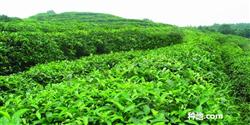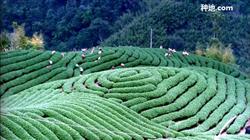How to use bio-pesticides in tea?

How to use bio-pesticides in tea? Please guide the current tea market, especially the tea export, which requires high quality and safety of tea. Biological pesticides, including microbial pesticides and botanical pesticides, do not cause pollution to tea and the environment, and have low toxicity to people and animals, so they are suitable pesticides for the production of green food tea. In the current production of grade A green food tea, especially organic tea and AA grade green food tea, the use of the following biological pesticides is worth popularizing. Rotenone. Also known as ivy essence, is a botanical insecticide with a long history of application. Easy to decompose in the air, low residual poison, environmentally friendly. It has contact killing and stomach toxicity to insect pests. It has a wide insecticidal spectrum and a short effective period, generally 5-6 days, and only 2-3 days in summer sunlight. It can be used in the production of A-grade green tea to control tea geometrid, tea caterpillar, tea silkworm, leaf roll moth, coir moth, diamondback moth, small green leafhopper, black whitefly, tea aphid, with 2.5% rotenone EC150~250mL per 667m2, diluted with water into 300 and 500 times liquid spray. This pesticide can not be mixed with alkaline pesticide. Rotenone is highly toxic to fish and should be used to prevent pollution of fish ponds. Matrine. Oxymatrine, also known as oxymatrine, is an alkaloid preparation extracted from the root and fruit of Sophora flavescens with ethanol and other organic solvents. It is easy to degrade in the environment, and there is basically no residue. For the control of tea black moth and tea caterpillar, in the 1st and 2nd instar larvae, or during the peak incubation period of eggs, 0.2% matrine AS50~75mL was used per 667m2, 50ml of water was added, and diluted into 1000 / 1500x liquid spray. It can be used to control tea inchworm in organic tea garden. before the 3rd instar larvae, 3.2% insect is used to kill EC (mixture of matrine and cypermethrin) 40~50mL per 667m2, water 75kg is added and diluted into 1500-2000 times liquid spray, which is suitable for low residue tea garden and green food tea garden. The organic tea garden can be sprayed with 800-1000 times liquid of pure matrine without chemical pesticides. The efficacy of matrine is slow and should be applied 3-5 days in advance. Bacillus thuringiensis. It is mainly stomach toxicity to pests. Parasporal crystals (endotoxin) and exotoxins are produced after feeding into the digestive tract by insects, and parasporal crystals are the main toxins. Generally speaking, the effect will not take effect until 2-5 days after application. It has a good control effect on Lepidoptera larvae such as tea caterpillar. To control Lepidoptera larvae such as tea caterpillar, tea black moth and tea diamondback moth, 10 billion live spores / g Bacillus thuringiensis WP or 10 billion spores / mLBtEC75~150g per 667m2 were sprayed with water diluted into 500 × 1 000 times solution at the 1st or 2nd instar larvae. It is suitable for use in organic tea gardens. Beauveria bassiana. Beauveria bassiana is a fungal insecticide. The insecticidal effect of Beauveria bassiana is to contact the insect body by spores, germinate under suitable conditions (temperature 24 ℃ ~ 28 ℃, relative humidity 90%-95%, neutral or slightly acidic), infect the insect body, reproduce in large quantities, secrete toxins, affect the blood circulation of insect pests, interfere with the metabolism of insect pests, and die 3-7 days later. The body is covered with white hairy hyphae, also known as "Beauveria bassiana". The control of tea leaf roll moth, tea caterpillar and small green leafhopper was used at the initial stage of the occurrence of 1st and 2nd instar larvae (nymphs). 0.5kg containing 50 ~ 7 billion spores / g bacterial powder per 667m2, 50L of water and spray were used to control tea weevil. During the peak period of pupation, 1~2kg containing 50 ~ 7 billion spores per gram of Beauveria bassiana per 667m2 was mixed into fine soil and sprinkled on the soil surface of tea rhizosphere. Or in the peak period of adult occurrence, the bacterial powder is diluted with water, and foliar spray is sprayed on cloudy or rainy days or when the humidity is high in the morning and evening. Nuclear polyhedrosis virus. Nuclear polyhedrosis virus (NPV) is a kind of virus insecticide. nuclear polyhedrosis virus has no cell structure and can only replicate and proliferate in the host to form protein crystalline polyhedra. When the insect is infected by mouth or wound, the virus enters the insect body and is digested by gastric juice, dissociates baculovirus particles, enters the body cavity through the epithelial cells of the midgut, invades blood cells, fat and somatic cells, and is embedded in crystalline proteins to form polyhedrons. Proliferate in the nucleus, and then infect healthy cells until the insect suppurates and dies. The broken epidermis of disease and insect faeces and insect corpses release polyhedrosis, which is widely spread by wind, rain, insects and birds, making virus diseases prevalent in the population of insect pests. It is mainly parasitic on Lepidoptera larvae. The efficacy of nuclear polyhedrosis virus is slow, but it lasts for more than 2 years. When the population density of the 1st and 2nd instar larvae of the first, fifth and sixth generations of tea inchworm was lower than the control index, 19 ~ 2 billion PIB (protein crystalline polyhedrosis virus) AS50mL per 667m2 was sprayed 1000 times on the water. When the population density exceeds the control index, tea inchworm virus and chemical pesticide (such as phoxim WP synergistic type) 50mL can be sprayed with water 1000 times, and to control tea caterpillar, 10 ~ 2 billion PIB nuclear polyhedrosis virus AS50mL per 667m2 and 1000 times water spray can be used to control tea caterpillar. Or use 25 to 30 worm carcasses per 667m2, mash them and spray them on water. Whitefly fungus preparation. It is a kind of fungal insecticide, which has good control effect on whitefly whitefly under wet conditions. To control whitefly whitefly and scale, in the 1st and 2nd instar larvae, under humid conditions, diluted with bacterial powder and water into a solution containing 10 million spores per milliliter, leaves were sprayed (scales still need wet branches). As the black-stimulated whitefly is mainly distributed on the back of the middle and lower leaves of the tea plant, the back of the leaf should be wet when spraying. Under suitable conditions, the parasitism rate of whitefly fungi is more than 70%, and the effective period is 2-3 years. Click to get more tea planting techniques click to get more flower planting techniques click to return to the farming network
- Prev

How to control diseases and insect pests of pollution-free tea?
How to control diseases and insect pests of pollution-free tea? Please guide the development of integrated pest management technology to ensure the high quality and high yield of tea production, but there are some urgent problems to be solved, especially the development of pollution-free tea production, which puts forward higher requirements for pest control in tea garden.
- Next

How does mountain tea prevent pests without pollution
How to grow mountain tea? Please guide one, what is mountain tea usually 600 meters above sea level produced by tea known as mountain tea. High mountain tea with its excellent quality, no pollution, low (even no) pesticide residues and other characteristics, is increasingly popular, become the majority of consumers preferred tea crystal. Tea leaves from...
Related
- Fuxing push coffee new agricultural production and marketing class: lack of small-scale processing plants
- Jujube rice field leisure farm deep ploughing Yilan for five years to create a space for organic food and play
- Nongyu Farm-A trial of organic papaya for brave women with advanced technology
- Four points for attention in the prevention and control of diseases and insect pests of edible fungi
- How to add nutrient solution to Edible Fungi
- Is there any good way to control edible fungus mites?
- Open Inoculation Technology of Edible Fungi
- Is there any clever way to use fertilizer for edible fungus in winter?
- What agents are used to kill the pathogens of edible fungi in the mushroom shed?
- Rapid drying of Edible Fungi

